All About the Crown on Queen Elizabeth's Coffin During Procession Through London
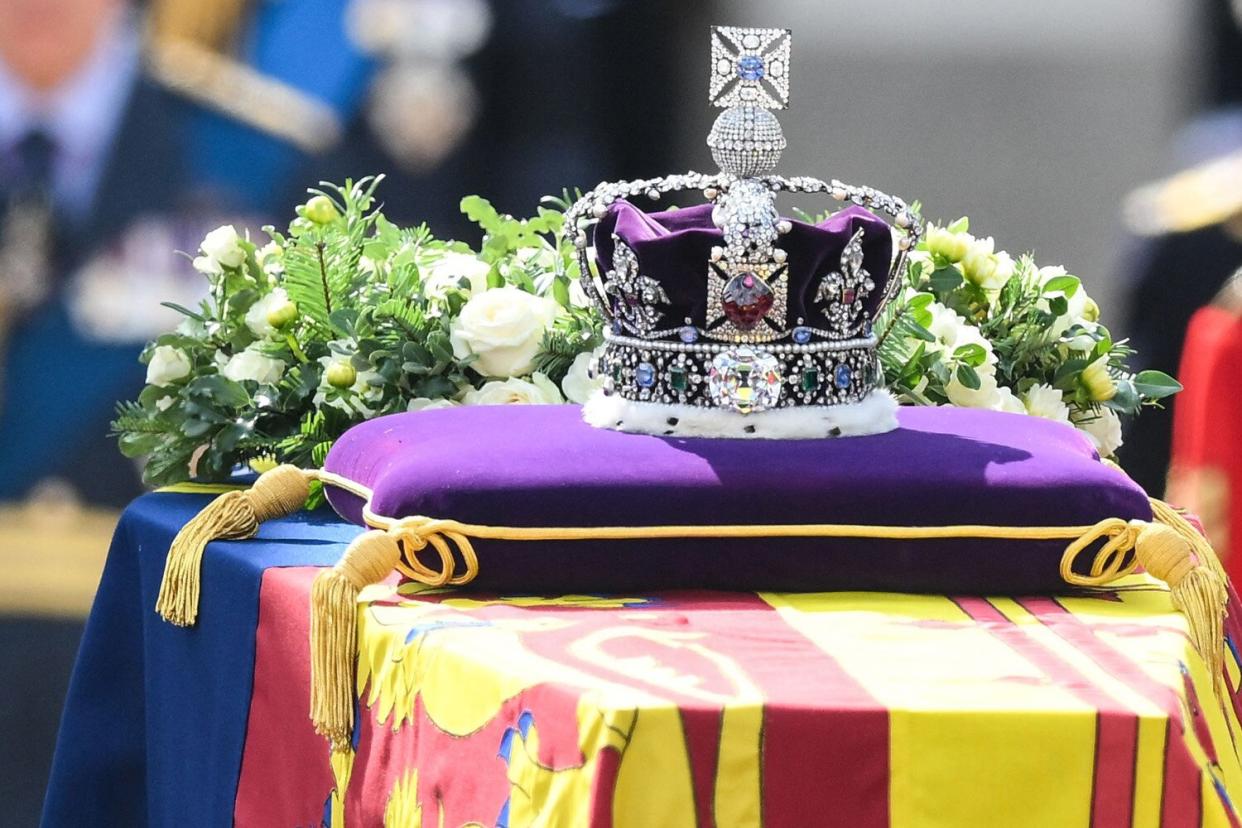
DANIEL LEAL/POOL/AFP via Getty Images Queen Elizabeth's coffin
What is perhaps Queen Elizabeth's best-known crown was placed on top of her casket as she left her royal residence of Buckingham Palace for the last time.
On Wednesday, the coffin of the late Queen, who died on September 8 at age 96 in Scotland, traveled to Westminster Hall in a solemn procession.
The coffin was draped with the Royal Standard, on which the Imperial State Crown (which was worn by the Queen for her coronation and at State Openings of Parliament) was placed on a velvet cushion along with a wreath of flowers. The wreath includes white roses, spray white roses, white dahlias as well as foliage that included pine from the gardens of Balmoral, and pittosporum, lavender and rosemary from the gardens at Windsor.
According to the Historical Royal Palace's website, the Imperial State Crown was originally made for Queen Victoria's coronation in 1838, and was remade for King Edward II's coronation in 1937. It's similar in appearance to the St. Edward's Crown created for the coronation of Charles II in 1661, after the original was destroyed under Oliver Cromwell in the mid-17th century when he ordered the abolition of the monarchy.
RELATED: Queen Elizabeth's Coffin Makes Procession Through London Followed by Royal Family
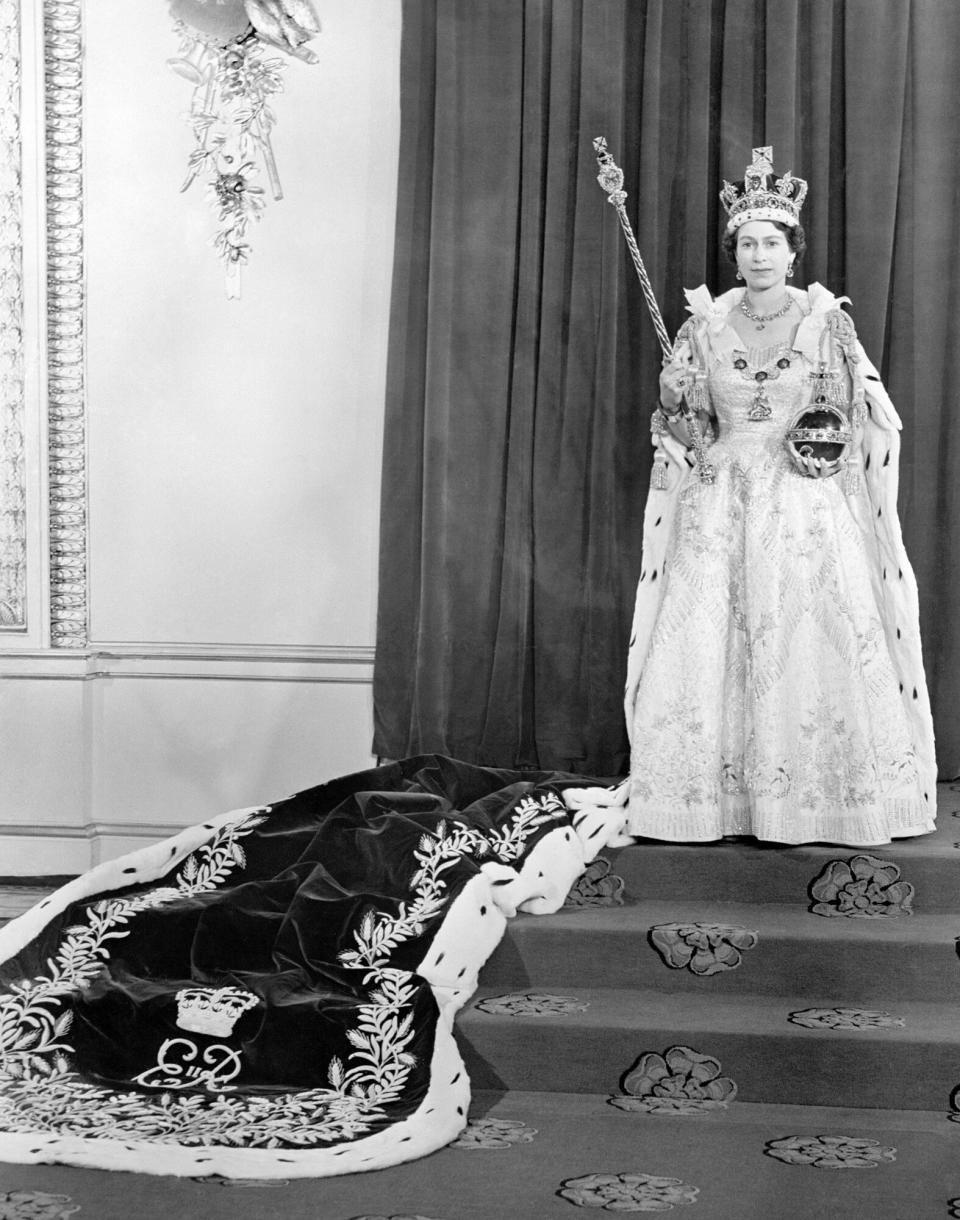
PA Images via Getty Queen Elizabeth II in the Throne room at Buckingham Palace after her Coronation in Westminster Abbey
The Queen's biographer, Robert Lacey, has confirmed that the late monarch found the St. Edward's crown heavy; she only wore it for a short time during her coronation in 1953, then replaced it with the Imperial State Crown for her departure from Westminster Abbey and the journey back to the palace.
For more on Queen Elizabeth, listen below to our daily podcast PEOPLE Every Day.
To make it more comfortable for the then-27-year-old monarch's coronation, the Imperial State Crown underwent a redesign, an insider previously told PEOPLE.
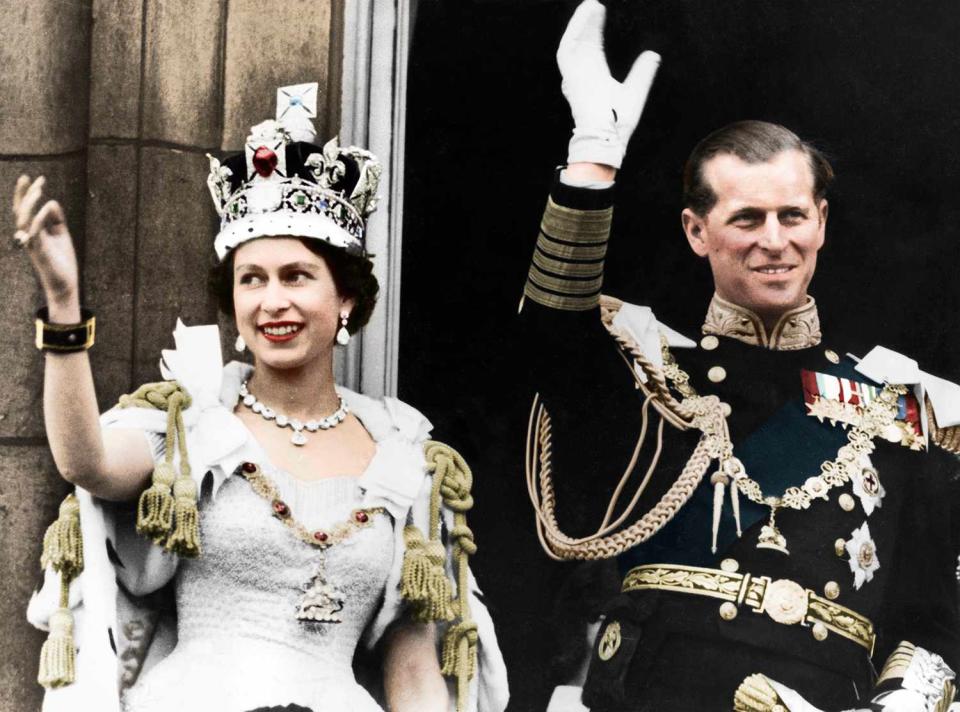
The Print Collector/Getty Queen Elizabeth and Prince Philip on the day of the monarch's coronation in 1953
RELATED: How Prince Harry, Prince William and Royals Will Honor Queen with Procession Through London
It contains also the world's fourth-largest polished diamond.
The 317.4-carat stone in the "brow" of the crown was created from the Cullinan Diamond, a 3,601-carat stone found in Africa in 1905. The stone was later cut into several pieces, with the "Cullinan II" earning a spot in the Imperial State Crown. Additionally, the crown is decorated with four rubies, 11 emeralds, 17 sapphires, 269 pearls and more than 2,500 smaller diamonds.
According to the Historic Royal Palaces website, "The crown contains some of the most famous jewels in the collection. These include the Black Prince's Ruby, the Stuart Sapphire, and the Cullinan II diamond."
The crown is normally kept under ultra-monitored guard at the Tower of London, where it is a centerpiece of the Crown Jewels exhibit. When it heads to the palace at the opening of the parliamentary session once a year, keepers leave a note to visitors saying it is in use.
Can't get enough of PEOPLE's Royals coverage? Sign up for our free Royals newsletter to get the latest updates on Kate Middleton, Meghan Markle and more!
Wednesday's procession to honor the late monarch included her four children — King Charles III, Princess Anne, Prince Andrew and Prince Edward — and several of her grandchildren, including Prince William, Prince Harry and Peter Phillips.
Also taking part were Princess Anne's husband Sir Tim Laurence, the Queen's cousin Prince Richard the Duke of Gloucester and the Queen's nephew David Armstrong-Jones the Earl of Snowdon.
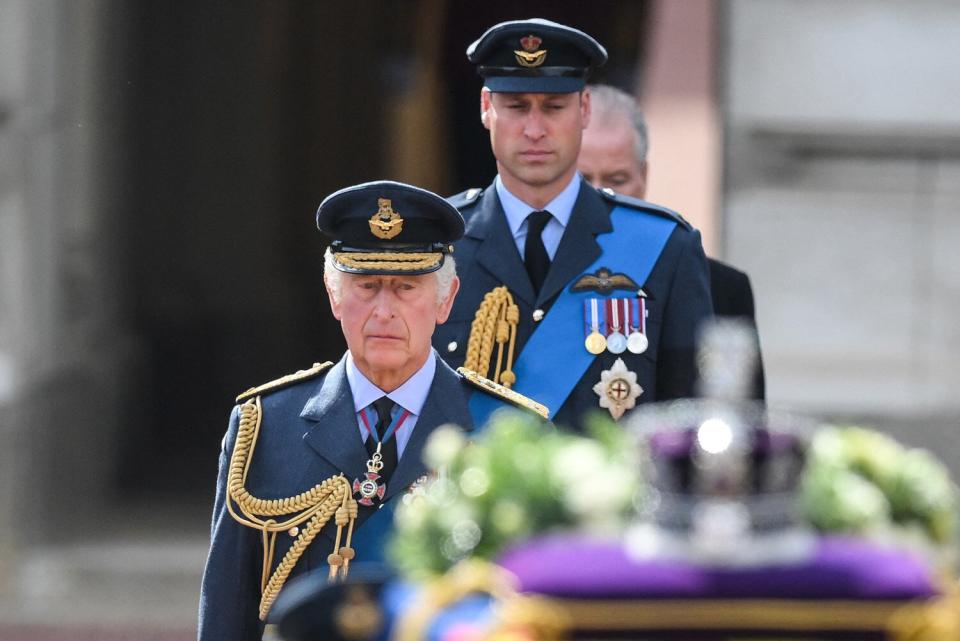
DANIEL LEAL/POOL/AFP via Getty Images King Charles and Prince William
RELATED: Inside the Life and Death of Queen Elizabeth II: 'She Will Be Missed by So Many'
Ahead of the gun carriage walked members of the Queen's household, including pages, her private secretary and other staff members.
William and Harry's wives, Kate Middleton and Meghan Markle, traveled to Westminster Hall by car, as did Queen Camilla and Sophie, Countess of Wessex, the wife of Prince Edward.
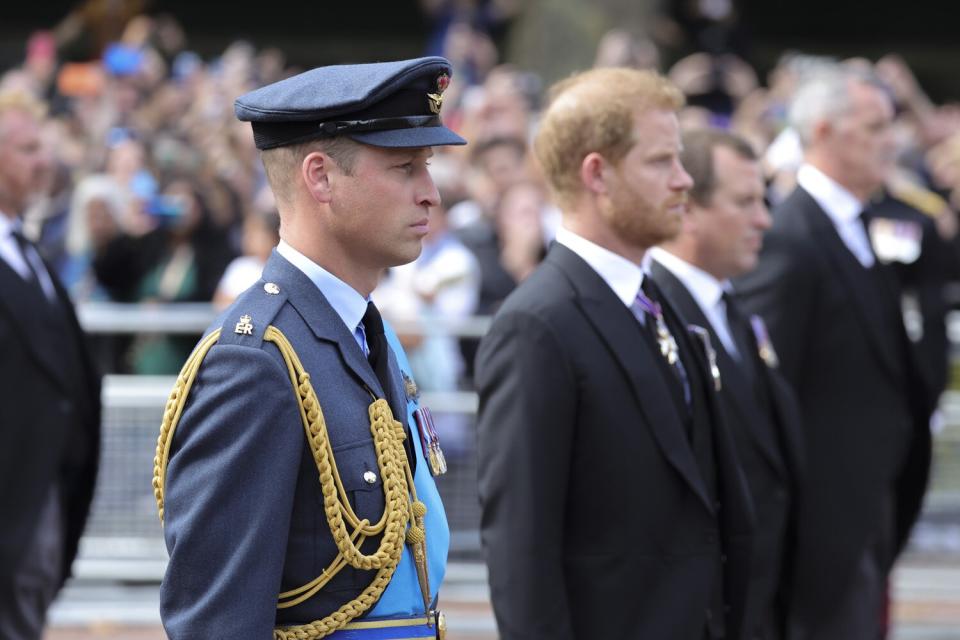
Chris Jackson/Getty Images Prince William and Prince Harry
When the procession arrived at Westminster Hall, the royal family attended a service lasting about 20 minutes led by the Archbishop of Canterbury accompanied by the Dean of Westminster.
The Queen will then lie in state in Westminster Hall for five days, where hundreds of thousands of people are expected to flow through to pay their respects until the funeral on Monday, September 19, which will be attended by royals, political leaders and figures from around the world.

 Yahoo News
Yahoo News 
